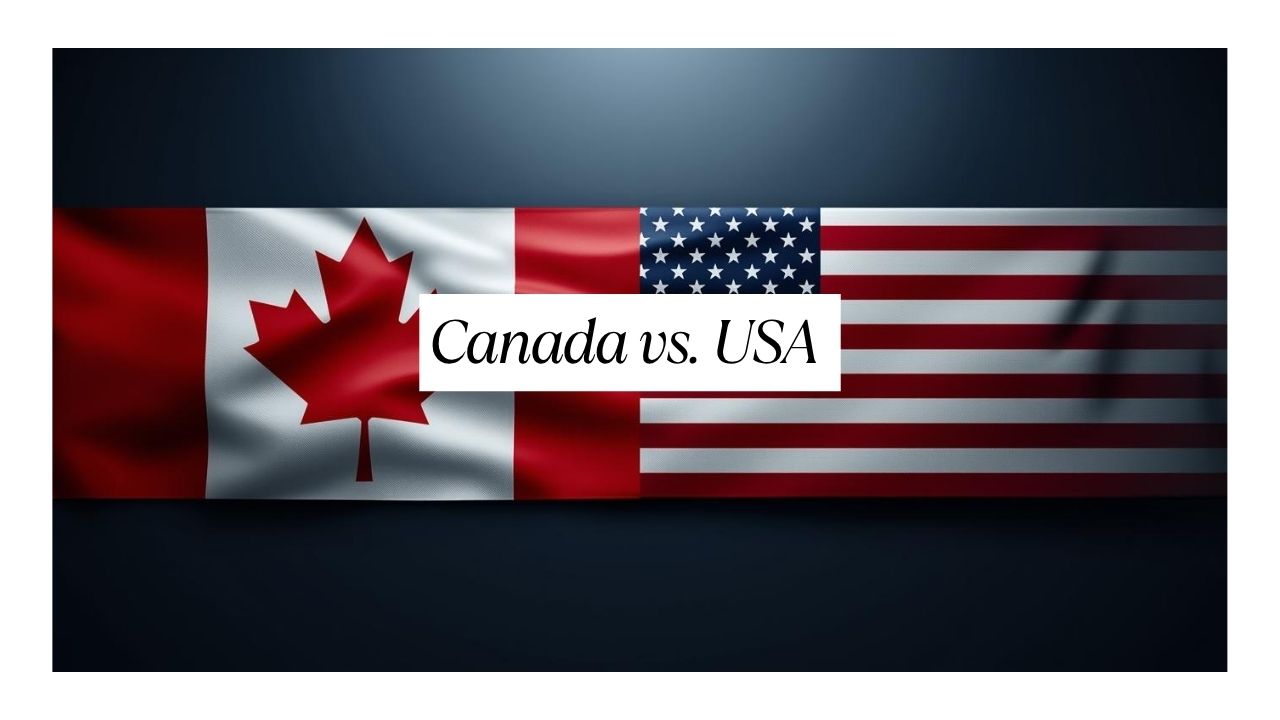Newcomer Digest
Archives
Canada vs. USA: A Tale of Two Systems & Key Metrics Compared
SIGN UP FOR OUR NEWSLETTER
Canada vs. USA: A Tale of Two Systems and the Six Metrics Defining the North American Dream |
For newcomers, the choice isn't just about a border; it's about two profoundly different approaches to work, health, and family. Here’s what the numbers reveal. |
Choosing between Canada and the United States is more than a simple geographical decision for those looking to build a new life in North America.
It is a choice between two fundamentally different philosophies on life, work, and the role of government.
While both nations share a continent, their socio-economic systems tell a fascinating story of divergence.
A deep dive into six key metrics reveals the stark contrasts that define the newcomer experience on either side of the 49th parallel.
This is the Canada vs. USA tale of two systems, a crucial comparison for anyone weighing their options for the future.
The Foundation: Wages and Taxes
The most immediate difference for any worker is the money in their pocket.
In the United States, the federal minimum wage has been stagnant for over a decade, a figure that has failed to keep pace with the rising cost of living in nearly every corner of the country.
Conversely, Canada has moved towards a living wage model, with a federal baseline significantly higher than its American counterpart and provincial rates that often climb even further.
This isn't just a policy difference; it's a statement of values about the dignity of work.
For an immigrant starting in an entry-level position, this gap can mean the difference between financial stability and a constant struggle.
Then there are taxes, a topic often misunderstood.
While it's a common assumption that Canadians are taxed far more heavily, the reality is more nuanced.
Federal median income tax rates are surprisingly comparable.
The crucial distinction lies not in the amount paid, but in what those taxes purchase for society.
This is where the two national identities truly begin to fork.
In Canada, taxes are a direct investment in collective well-being, funding a broad social safety net that impacts daily life profoundly.
The Human Factor: Healthcare and Family Support
Perhaps no metric illustrates the Canada vs. USA divide more clearly than healthcare.
Canada's publicly funded, universal healthcare system ensures that access to medical care is a right, not a privilege tied to employment or income.
While the system faces challenges with wait times, it removes the terrifying prospect of financial ruin from a sudden illness or accident.
In the United States, the privatized system can offer cutting-edge care but at a staggering cost.
Average annual out-of-pocket expenses can be thousands of dollars, creating a persistent anxiety for families.
For a newcomer, the peace of mind offered by the Canadian model is an invaluable asset.
This philosophy of social support extends dramatically to family life.
Canada boasts one of the world's most generous paid parental leave policies, allowing parents up to 78 weeks to bond with a new child, supported by employment insurance benefits.
The United States is a global outlier, offering zero weeks of federally mandated paid parental leave.
The impact on families, particularly mothers, is immense.
This policy chasm reflects a deep ideological split: one nation prioritizing state-supported family bonding, the other prioritizing a rapid return to the workforce.
The choice for a young family is often a choice between time and hustle.
Economic Structures: Banking and Labor
The stability of a nation's economy is built on its foundational structures, and here too, the two countries differ.
Canada's banking system is renowned for its strength and conservative regulations.
Overseen by a powerful federal body, the country's major banks weathered the 2008 financial crisis with remarkable resilience.
This creates a stable, predictable environment for newcomers seeking mortgages, business loans, or simply a safe place to build their savings.
The American banking landscape is more fragmented and deregulated, which can foster innovation and competition but also introduces greater volatility and risk.
The power of the worker also follows a different trajectory.
Unionization rates in Canada are nearly triple those in the United States.
Strong public-sector unions in fields like education and healthcare provide a powerful voice for fair wages, benefits, and job security.
In the U.S., the decline of union membership, especially in the private sector, has shifted the balance of power, leaving many workers to negotiate terms individually.
For skilled tradespeople or public servants, a Canadian union card can be a ticket to middle-class stability.
The Immigrant's Dilemma: Choosing a Value System
Ultimately, these six metrics paint a picture of two different versions of the North American dream.
It is not a matter of one being definitively "better," but of which system aligns with an individual's or a family's priorities.
The United States may offer a higher ceiling for entrepreneurial ambition and wealth accumulation, driven by a culture of individualism and lower regulation.
It is the land of the high-risk, high-reward venture.
Canada, in contrast, offers a higher floor.
Its strengths lie in stability, predictability, and a collective investment in public services that soften the blows of misfortune.
It is a system designed to provide a softer landing and a more inclusive, if sometimes more modest, path to success.
For many newcomers, especially those with families or those seeking security over speculative opportunity, the Canadian model presents a compelling argument.
Behind every policy is a human story: the parent who can afford to stay home with their infant, the worker who earns a living wage from their first day, and the family that never has to fear a medical bill.
These are not just statistics; they are the building blocks of a new life.
The choice between Canada and the USA is a choice of which foundation you want to build upon.
---
Frequently Asked Questions
Is it cheaper to live in the USA than in Canada?
While some goods and housing can be cheaper in the U.S., particularly outside major cities, the total cost of living can be misleading. Once essential but unpredictable costs like healthcare are factored in—which can run into thousands of dollars annually in the U.S.—Canada's higher taxes for social services can often result in more financial predictability and lower overall household risk.
Which country is better for raising a family?
Based on key metrics, Canada's system is often seen as more family-friendly. The combination of universal healthcare, heavily subsidized post-secondary education, and extremely generous paid parental leave policies creates a strong social safety net that directly supports families and child development. The U.S. system places a much heavier financial burden on individual families for these services.
Does the US offer more job opportunities than Canada?
The U.S. has a larger and more diverse economy, which can translate to more opportunities in certain high-growth sectors like tech and finance. However, Canada's immigration system is often more directly tied to its labor needs, with clearer pathways to permanent residency for skilled workers in high-demand fields. The choice often depends on an individual's specific profession and career goals. |

